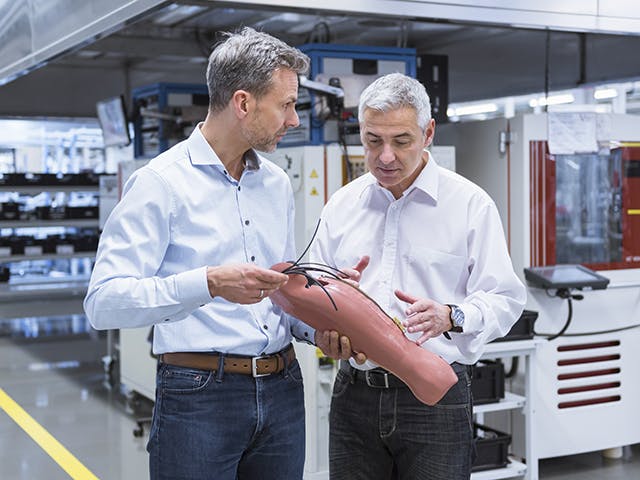Most medical device companies, whether emerging start-ups not bound by legacy processes and systems, or established businesses, recognize that paper is not perfect – it is inefficient and poor at error-proofing processes. It does not provide timely information about how production is running. Further, most companies acknowledge the compliance risks of paper.
eDHRs, or Electronic Device History Records, are paperless, electronic systems within manufacturing execution systems (MES) that enforce production processes and capture all information associated with as-built production records. eDHR provides the error-proofing and real-time visibility necessary to produce consistent product quality each and every time. Should product quality issues arise, eDHR can quickly contain suspect products, either in process or in the field, and take action to address the issue. The electronic records stored in eDHR yield information that can also help MD&D companies optimize production processes.
Electronic Device History Records (eDHR) collect information associated with manufacturing. A common misconception is that eDHR is merely a DHR converted from paper into an electronic format, or a “paper-on-glass” system, which might be digitally scanned versions of paper documents or “smart” PDF documents. The true value from eDHR is not achieved merely by “paper-on-glass,” but by actual enforcement and mistake-prevention on the shop floor, which also yields accurate visibility into operations in real time.
The impact of eDHR systems on quality, efficiency and traceability
eDHR systems error-proof processes and provide real-time visibility and traceability into manufacturing operations. MD&D manufacturers use eDHR to guide operators through their daily activities, enforcing that training records are current, equipment is qualified, the right materials are used, all data is captured and signatures are recorded. eDHR eliminates production mistakes such as component mixes and documentation errors.
By capturing data at each and every point in the manufacturing process – whether it is capturing a test value or result or the actual components that are bar-code scanned – eDHR can sound a warning if a mistake is made. In many cases, it can prevent human or machine errors. If a product quality event occurs, eDHR can instantly aid in the 'containment management' of suspect products. The affected products, whether in production or the field, can be identified, and the proper actions are taken. Defective in-process products can be put on hold, or the scope of a recall might be reduced to only the suspect product in the field, for example.
Production data, previously stored away in folders and file cabinets, is captured in the eDHR and is available securely online for analysis, helping to optimize processes. At each step of the manufacturing process, data is collected and specifications are enforced, enabling comprehensive traceability with instant visibility across the whole enterprise via drill-down into production and quality dashboards and KPIs.
Using eDHR, all data must be complete and within spec before a product can continue in the manufacturing process. This 'self-auditing' nature of the eDHR enables a more streamlined process. eDHR improves manufacturing performance by eliminating many non-value-added activities that increase cycle time, such as in-process (or Manufacturing) DHR reviews. eDHR also significantly reduces the final review and release (quality review) processes, which allows MD&D companies to get products to customers faster while introducing an opportunity to reduce WIP and FG inventory buffers built in to accommodate the latency associated with slow paper DHR processes.
eDHR ensures consistent product quality by establishing a platform to execute production and collect detailed quality data in real time. In many cases, product quality improves as a result of better enforcement, engineering and quality, using the valuable information stored in the eDHR to analyze how processes are performing. Yield, throughput and non-conforming material reports are produced by an eDHR system, allowing users to look at quality from a holistic perspective. Access to real-time information is available globally, anytime, anywhere, helping users determine whether corrective and preventive actions (CAPAs) need to be taken.
Advantages of eDHR systems for MD&D companies
An eDHR system can help manufacturers meet high-priority goals that improve the bottom line. The benefits of eDHRs are available to both large and emerging MD&D companies. Global MD&D companies report reductions in non-conformances, significant overhead reductions and the associated savings, and reduced risk and exposure to quality incidents. Emerging MD&D companies are stabilizing their processes more quickly with better enforcement and real-time information and trends. All MD&D companies have greatly reduced the time it takes to get products to their customers with a more streamlined end-to-end process, resulting in increased quarterly revenues by slashing the time it takes to review/release and recognize revenue.

